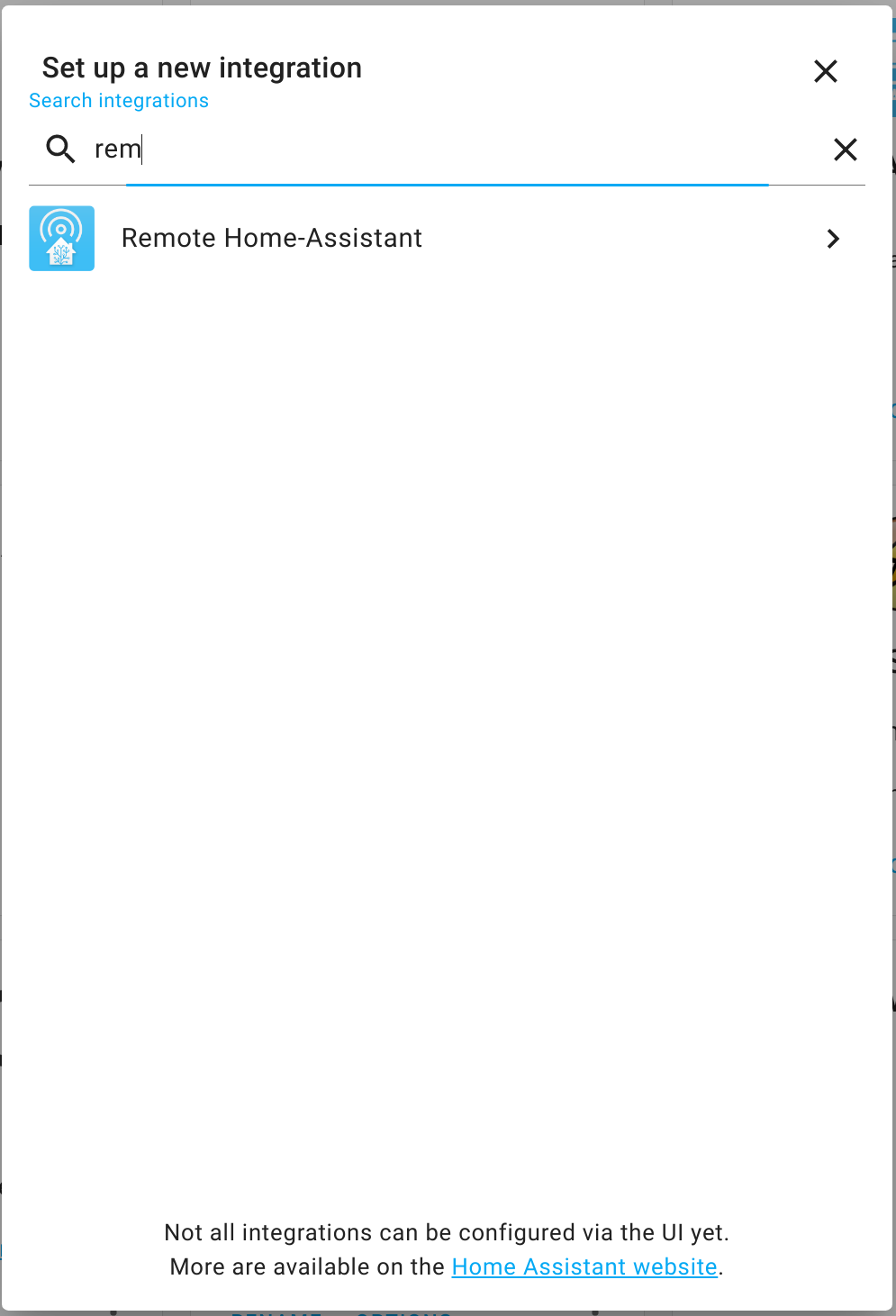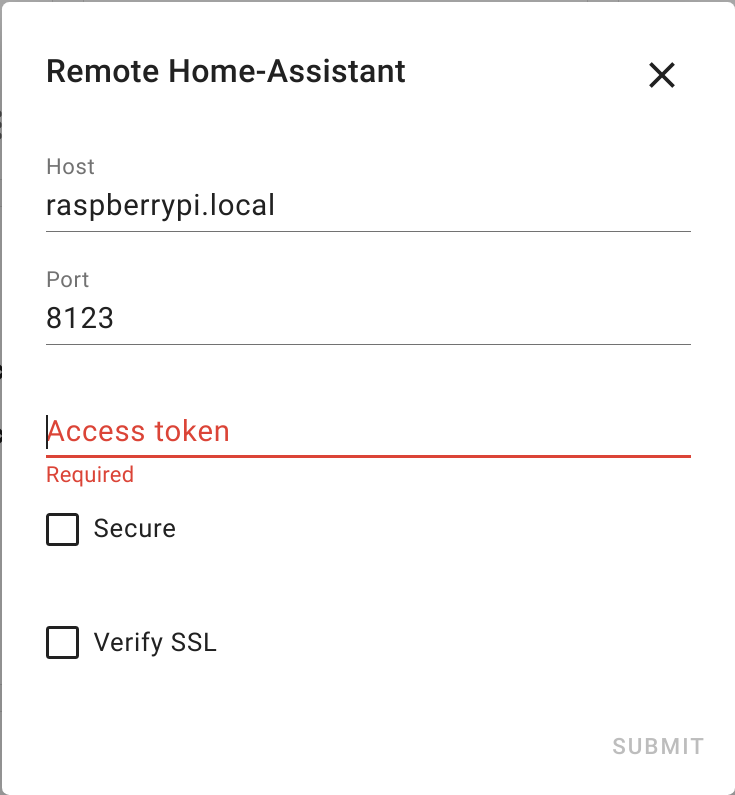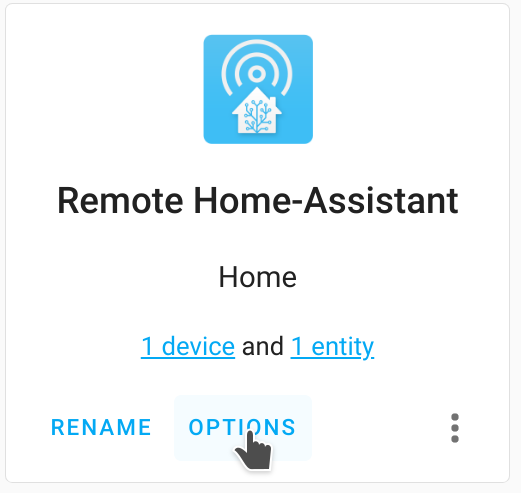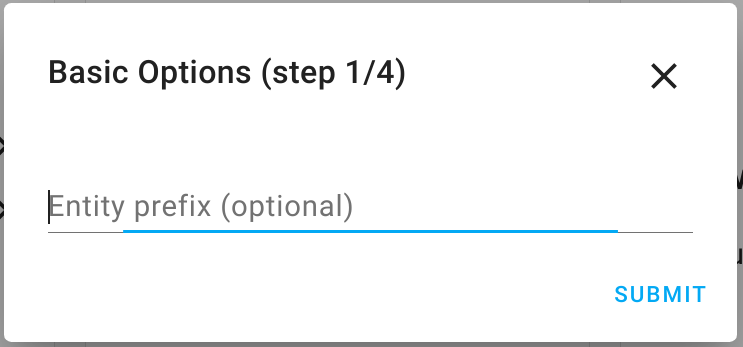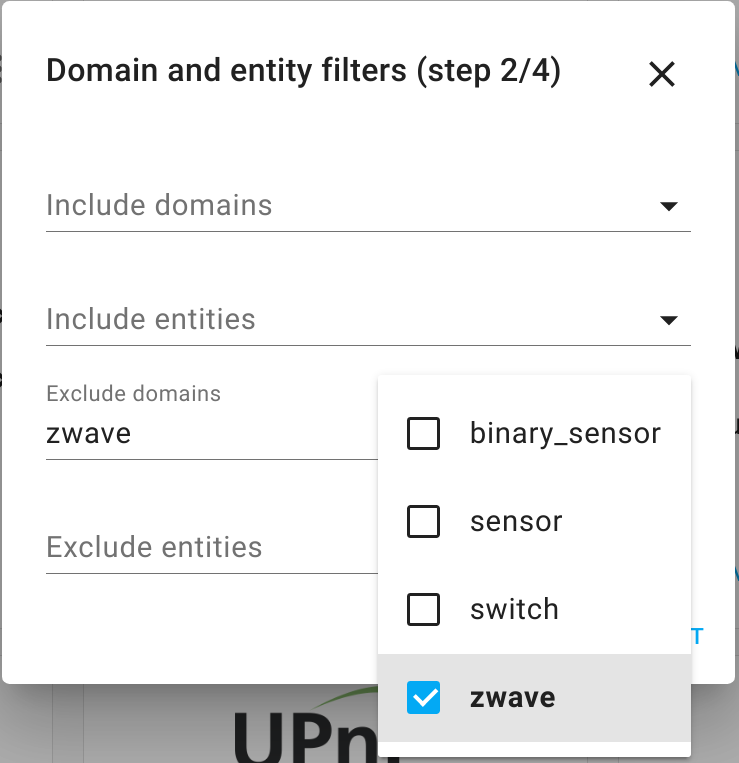Component to link multiple Home-Assistant instances together.
This component will set up the following platforms.
| Platform | Description |
|---|---|
remote_homeassistant | Link multiple Home-Assistant instances together . |
The main instance connects to the Websocket APIs of the remote instances (already enabled out of box), the connection options are specified via the host, port, and secure configuration parameters. If the remote instance requires an access token to connect (created on the Profile page), it can be set via the access_token parameter. To ignore SSL warnings in secure mode, set the verify_ssl parameter to false.
After the connection is completed, the remote states get populated into the master instance. The entity ids can optionally be prefixed via the entity_prefix parameter.
The entity friendly names can optionally be prefixed via the entity_friendly_name_prefix parameter.
The component keeps track which objects originate from which instance. Whenever a service is called on an object, the call gets forwarded to the particular remote instance.
When the connection to the remote instance is lost, all previously published states are removed again from the local state registry.
A possible use case for this is to be able to use different Z-Wave networks, on different Z-Wave sticks (with the second one possible running on another computer in a different location).
This component must be installed on both the main and remote instance of Home Assistant
If you use HACS:
- Click install.
Otherwise:
- To use this plugin, copy the
remote_homeassistantfolder into your custom_components folder.
Remote instance
On the remote instance you also need to add this to configuration.yaml:
remote_homeassistant: instances:This is not needed on the main instance.
- Add a new Remote Home-Assistant integration
- Specify the connection details to the remote instance
You can generate an access token in the by logging into your remote instance, clicking on your user profile icon, and then selecting "Create Token" under "Long-Lived Access Tokens".
Check "Secure" if you want to connect via a secure (https/wss) connection
- After the instance is added, you can configure additional Options by clicking the "Options" button.
- You can configure an optional prefix that gets prepended to all remote entities (if unsure, leave this blank).
Click "Submit" to proceed to the next step.
- You can also define filters, that include/exclude specified entities or domains from the remote instance.
or via..
To integrate remote_homeassistant into Home Assistant, add the following section to your configuration.yaml file:
Simple example:
# Example configuration.yaml entry remote_homeassistant: instances: - host: raspberrypi.localFull example:
# Example configuration.yaml entry remote_homeassistant: instances: - host: localhost port: 8124 - host: localhost port: 8125 secure: true verify_ssl: false access_token: !secret access_token entity_prefix: "instance02_" entity_friendly_name_prefix: "Instance02 " include: domains: - sensor - switch - group entities: - zwave.controller - zwave.desk_light exclude: domains: - persistent_notification entities: - group.all_switches filter: - entity_id: sensor.faulty_pc_energy above: 100 - unit_of_measurement: W below: 0 above: 1000 - entity_id: sensor.faulty_*_power unit_of_measurement: W below: 500 subscribe_events: - state_changed - service_registered - zwave.network_ready - zwave.node_event load_components: - zwavehost: host: Hostname or IP address of remote instance. required: true type: string port: description: Port of remote instance. required: false type: int secure: description: Use TLS (wss://) to connect to the remote instance. required: false type: bool verify_ssl: description: Enables / disables verification of the SSL certificate of the remote instance. required: false type: bool default: true access_token: description: Access token of the remote instance, if set. required: false type: string max_message_size: description: Maximum message size, you can expand size limit in case of an error. required: false type: int entity_prefix: description: Prefix for all entities of the remote instance. required: false type: string entity_friendly_name_prefix: description: Prefix for all entity friendly names of the remote instance. required: false type: string include: description: Configures what should be included from the remote instance. Values set by the exclude lists will take precedence. required: false default: include everything type: mapping of entities: description: The list of entity ids to be included from the remote instance type: list domains: description: The list of domains to be included from the remote instance type: list exclude: description: Configures what should be excluded from the remote instance required: false default: exclude nothing type: mapping of entities: description: The list of entity ids to be excluded from the remote instance type: list domains: description: The list of domains to be excluded from the remote instance type: list filter: description: Filters out states above or below a certain threshold, e.g. outliers reported by faulty sensors required: false type: list of entity_id: description: which entities the filter should match, supports wildcards required: false type: string unit_of_measurement description: which units of measurement the filter should match required: false type: string above: description: states above this threshold will be ignored required: false type: float below: description: states below this threshold will be ignored required: false type: float subscribe_events: description: Further list of events, which should be forwarded from the remote instance. If you override this, you probably will want to add state_changed!! required: false type: list default: - state_changed - service_registered load_components: description: Load components of specified domains only present on the remote instance, e.g. to register services that would otherwise not be available. required: false type: list service_prefix: garage_ description: Prefix used for proxy services. Must be unique for all instances. required: false type: str default: remote_ services: description: Name of services to set up proxy services for. required: false type: list If you have remote domains (e.g. switch), that are not loaded on the main instance you need to list them under load_components, otherwise you'll get a Call service failed error.
E.g. on the master:
remote_homeassistant: instances: - host: 10.0.0.2 load_components: - zwaveto enable all zwave services. This can also be configured via options under Configuration->Integrations.
Some components do not use entities to handle service calls, but handle the service calls themselves. One such example is hdmi_cec. This becomes a problem as it is not possible to forward the service calls properly. To work around this limitation, it's possible to set up a proxy service.
A proxy service is registered like a new service on the master instance, but it mirrors a service on the remote instance. When the proxy service is called on the master, the mirrored service is called on the remote instance. Any error is propagated back to the master. To distinguish proxy services from regular services, a service prefix must be provided.
Example: If a proxy service is set up for hdmi_cec.volume with service prefix remote_, a new service called hdmi_cec.remote_volume will be registered on the master instance. When called, the actual call will be forwarded to hdmi_cec.volume on the remote instance. The YAML config would look like this:
remote_homeassistant: instances: - host: 10.0.0. service_prefix: remote_ services: - hdmi_cec.volumeThis can also be set up via Options for the integration under Configuration -> Integrations.
See also the discussion on home-assistant/core#13876 and home-assistant/architecture#246 for this component



